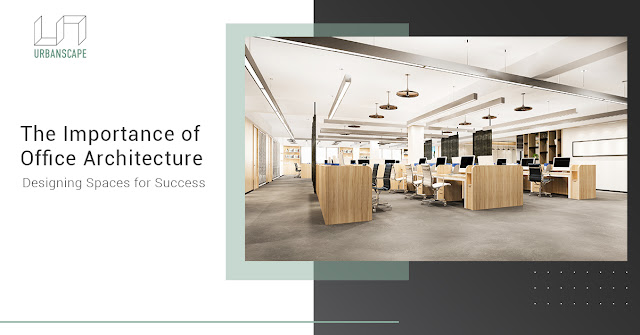The Importance of Office Architecture: Designing Spaces for Success
As our workspaces have evolved, so has the importance of office architecture. From the traditional cubicle to open-concept floorplans, the way we design our offices can have a significant impact on our productivity, creativity, and overall success. In this article, we’ll explore the various ways office architecture can influence our daily work lives, and why it’s important to consider when designing a workspace that maximizes productivity and employee satisfaction.
The workplace is no longer just a place to go to work; it's a space that plays a crucial role in the success of a business. With the shift to remote work due to the pandemic, businesses need to re-evaluate the importance of office architecture in designing spaces that foster creativity, collaboration, and productivity.
Introduction
Designing a workspace is about more than just aesthetics. It’s about creating an environment that allows employees to work comfortably and efficiently. Office architecture is the design and layout of a workspace, including the physical structure, materials, lighting, and space allocation. It’s an essential component of office design that can influence employee productivity, creativity, and overall job satisfaction.
When we think of Office Architecture, we often think of the traditional cubicle or corner office. However, office design has come a long way in recent years, and now, there are many options to consider, from open-concept floor plans to green spaces and outdoor meeting areas. The following sections will explore some of the key ways office architecture can influence our daily work lives and why it’s important to consider when designing a workspace.
The Impact of Office Architecture on Productivity
The design of an office space can significantly impact employee productivity. In a study conducted by the International Interior Design Association, it was found that well-designed workplaces can increase employee productivity by up to 20%. Some of the key design elements that can impact productivity include:
Layout and Space Allocation: A well-designed office layout can maximize the use of space, making it easier for employees to move around and access the resources they need. Additionally, a thoughtfully designed layout can help to reduce distractions and create a more focused work environment.
Lighting: The lighting in an office can impact employee mood and energy levels. Studies have shown that natural light can improve productivity and reduce stress levels, making it an essential design element to consider when creating a workspace.
Color: The colors used in an office can also impact employee productivity. Bright, vibrant colors can increase energy levels and stimulate creativity, while neutral colors can create a calm, focused environment.
The Role of Office Architecture in Fostering Creativity and Collaboration
In addition to productivity, office architecture can also impact creativity and collaboration. In a study conducted by Gensler, it was found that workplaces that prioritize collaboration and innovation have a higher level of employee engagement and satisfaction. Some of the key design elements that can foster creativity and collaboration include:
Open Concept Spaces: Open concept floorplans have become increasingly popular in recent years, as they promote collaboration and communication between team members. Removing walls and barriers between employees can also create a sense of community and shared purpose.
Breakout Spaces: Breakout spaces are designated areas for employees to take a break from their work and collaborate with their colleagues. These areas can be designed as informal meeting spaces or more structured areas for brainstorming and collaboration.
Outdoor Spaces: Incorporating outdoor spaces, such as patios or rooftop gardens, into office design can provide employees with a change of scenery and a break from their daily routine. Outdoor spaces can also promote collaboration and creativity by providing a new environment for employees to work and interact.
Employee Satisfaction and Retention
Finally, office architecture can impact employee satisfaction and retention. A well-designed workspace can improve employee morale and job satisfaction, well-designed workspace can improve employee morale and job satisfaction, leading to increased retention rates. In a survey conducted by Clutch, it was found that 39% of employees believe that the design of their workspace impacts their overall job satisfaction.
When employees are happy with their workspace, they are more likely to feel valued and engaged in their work. This, in turn, can lead to increased productivity and better job performance. Additionally, a well-designed workspace can help to attract top talent, as job seekers often consider the design of a workspace when evaluating potential employers.
Conclusion
In conclusion, office architecture plays a critical role in the success of a business. The design of a workspace can impact employee productivity, creativity, and overall job satisfaction. It's essential to consider the various design elements, such as layout, lighting, and color when creating a workspace that maximizes productivity and employee satisfaction. By prioritizing office architecture, businesses can create a space that not only looks good but also functions well and fosters a sense of community and shared purpose among employees.

Comments
Post a Comment